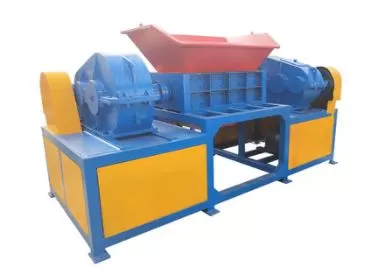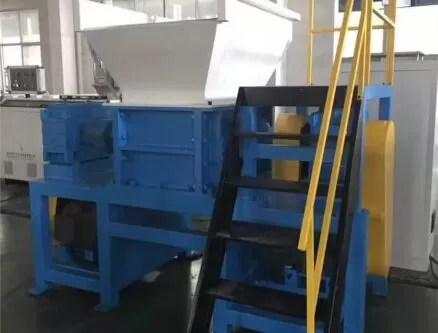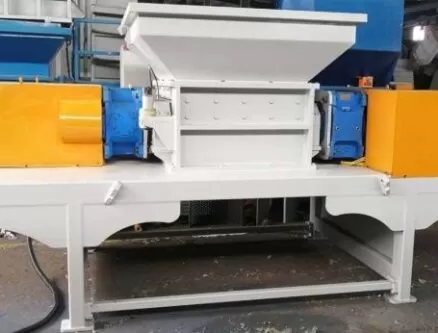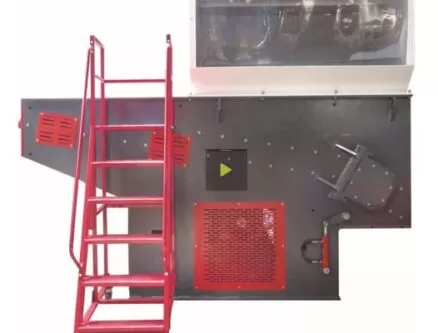Let’s be honest. Plastic waste isn’t politely waiting for developed countries to solve it. Emerging markets are now ground zero for the plastic problem. Mountains of plastic are growing. Infrastructure is lagging. And the pressure is on. People are screaming for solutions—and I hear them loud and clear. The good news? Plastic shredding technology might just be the super hero in disguise.
Plastic shredding technology is evolving fast in emerging markets, offering scalable, cost-effective solutions for local waste problems. The key lies in customized machines, decentralized systems, and smart automation—all designed to handle chaotic waste streams and boost recycling efficiency.
We’re not just watching this revolution unfold—we’re building it from the inside out. Let’s talk about where the plastic shredder fits into all this chaos and potential.

Why Is Plastic Shredding So Important in Emerging Markets?
Most emerging economies are drowning in plastic waste.
According to South Asia Recycling Trends 2024, over 70% of plastic waste in the region ends up mismanaged. That’s not just bad news for the environment—it’s a lost business opportunity.
And here’s where shredding comes in. Shredding isn’t just about reducing volume. It’s the first and most critical step in recycling. Without it, you’re feeding uncut spaghetti into a machine that only digests rice.
It transforms messy, irregular plastic into uniform flakes. Easy to wash. Easy to sort. Easy to pelletize. In short, it makes the impossible possible.
What Kind of Shredders Work Best for These Markets?
This is where I get technical—and a bit excited.
In emerging markets, you can’t just drop in a shiny, complex German shredder and hope for the best. Electricity is unstable. Maintenance is rare. And the feedstock? It’s a mixed bag of grocery bags, shampoo bottles, and sometimes… flip-flops.
That’s why at Amige, we’ve engineered rugged, low-maintenance machines that chew through chaos. Our double-shaft slow-speed shredders with hardened steel blades are the MVPs. They handle contamination, dirt, and surprises (like metal bits) without flinching.
How Do Local Needs Influence Machine Design?
You can’t build machines for Nairobi the same way you do for Tokyo.
Emerging markets need:
- Lower energy consumption
- Fewer moving parts
- Quick blade swaps
- Modular upgrades
- Simple interfaces
We took feedback from recyclers in Southeast Asia and Latin America to redesign our control panels with fewer buttons and more visual indicators. Why? Because in many areas, operators may not even speak the same language as the instruction manual.
It’s about being smart without being fragile.

What Are the Biggest Challenges for Plastic Shredding in These Markets?
Let’s not sugarcoat it.
The biggest hurdles aren’t technical—they’re systemic. Some of the top issues include:
- Inconsistent plastic feedstock
- Lack of trained personnel
- Frequent power outages
- Limited access to spare parts
- Unpredictable market demand for recycled materials
That’s why we’re now offering solar-compatible control systems and remote training modules in multiple languages. Because a machine is only as good as the people using it—and the electricity running it.
UN Waste Infrastructure Gaps Report 2023 paints a sobering picture, but with the right machines and local empowerment, we can flip the narrative.
What Are the Opportunities?
Here’s where things get juicy.
There is massive demand for locally made plastic flakes and pellets—especially in countries trying to build circular economies.
Governments are introducing extended producer responsibility (EPR) rules. Brands want recycled content in their packaging. And international buyers are willing to pay extra for high-quality secondary plastic from ethical sources.
With an efficient shredding setup, you can supply clean, sorted flakes for extrusion, injection molding, or even 3D printing. And the kicker? Many markets still have wide-open territory—first movers are cleaning up (both literally and financially).
Global Recycled Plastic Demand Outlook supports this trend with data showing 18% year-over-year growth in demand across Africa and South Asia.

Can Smart Tech Help in Resource-Limited Environments?
Absolutely.
And no, we’re not talking robots and lasers—just practical innovation.
We’ve integrated vibration-based diagnostics that tell operators when blades need sharpening. No app needed. Just a flashing light and a color chart.
We’re also working with local partners to build IoT-enabled shredder dashboards that use GSM networks instead of Wi-Fi. Because yes, many operators have smartphones, but spotty internet? That’s another story.
Smart doesn’t have to mean expensive. It just has to be… well, smart.
What Does the Road Ahead Look Like?
I see a wave building.
Emerging markets are starting to leapfrog the traditional recycling models. Instead of investing in mega-factories, they’re building decentralized micro-recycling hubs. Small footprint, big impact.
Plastic shredding is at the center of it all.
In fact, Asia-Pacific Micro Recycling Trendwatch 2025 highlights that over 60% of new shredders installed in the last 12 months were part of local, decentralized operations.
And if you ask me, that’s where the real future lies. In community-led solutions with rugged tech and real-world grit.

How Are We at Amige Contributing to This Growth?
Here’s the fun part—I get to brag a little.
We’ve deployed machines in over 20 countries, with special focus on Indonesia, Kenya, and Colombia. Each installation taught us something new.
- In Jakarta, we developed water-resistant shredders for flood-prone zones.
- In Nairobi, we added manual crank override systems to keep things moving during blackouts.
- In Medellín, we designed blade swap kits for DIY maintenance—no technician needed.
We’re not just selling machines. We’re co-creating solutions with the people on the ground. And yes, I do lose sleep over blade alignment—but it’s worth it.
What Should You Watch Out for If You’re Entering This Space?
Advice from someone with the scars to prove it:
- Don’t oversell automation: Simpler is better.
- Train your operators like your ROI depends on it—because it does.
- Respect local knowledge: They know the waste better than your spreadsheets.
- Plan for downtime—and then plan for more.
- Always keep spare blades and belts onsite. Always.
And above all, listen. The needs of a recycler in Phnom Penh are not the same as one in Lima. But both can become shredding success stories—with the right tools.
Conclusion
Plastic shredding is no longer a sidekick in emerging markets—it’s the hero. With the right machines, local partnerships, and a dose of creativity, we’re not just breaking plastic. We’re building futures.
